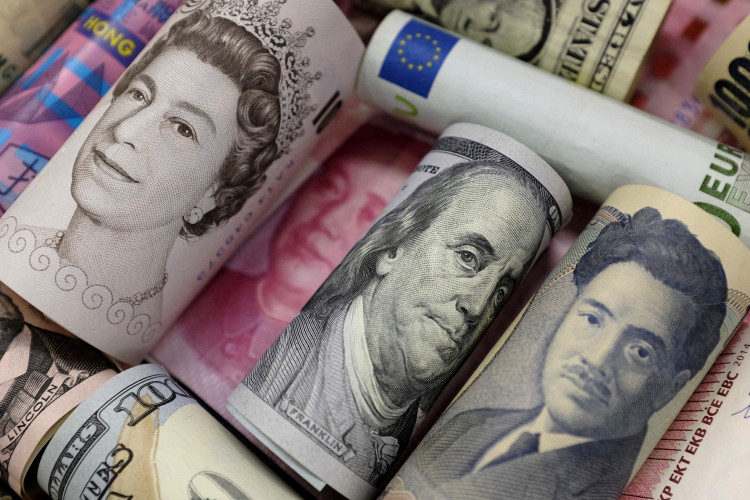Investors are betting on the U.S. Federal Reserve wrapping up its interest-rate hikes, leading to a decrease in the value of the U.S. dollar. Consequently, the euro-to-dollar exchange rate is on track to set the longest winning streak since 2004.
Earlier on Tuesday, the euro momentarily rose 0.4% against the dollar to 1.1276, marking a nine-day rise and reaching its highest level since February 2022. However, it later receded slightly. As of this writing, the euro has slipped a tad against the dollar.
In less than a fortnight, the euro-to-dollar ratio has risen by 3.5%, achieving a cumulative increase of 4% this year.
Interestingly, the surge of the euro has pressured the U.S. dollar index downward. The euro constitutes the largest weight in the U.S. dollar index, approximately 57.6%, which directly contributes to the recent decline of the U.S. dollar index.
Previously, the eurozone faced significant core inflation pressure, leading the European Central Bank's monetary policy to lean more hawkish than the Fed's. As a result, the euro's short-term fundamentals exceeded the dollar's, and the euro became stronger. The prospect of a U.S. economic downturn, combined with the Fed's interest rate hike expectations cooling significantly, pushed the U.S. dollar index down to around 101, indirectly boosting the value of the euro.
By May, as there had been no significant changes in the eurozone's fundamentals, the Fed's expectations of interest rate hikes resurged, driving the U.S. dollar index to climb again and leading the euro-to-dollar ratio to dip accordingly.
More recently, U.S. inflation has cooled more than anticipated, leading markets to believe the Fed may soon conclude its tightening cycle. The July interest rate hike is increasingly seen as the final one, which last week dragged the U.S. dollar index to a 15-month low and indirectly boosted the euro's value.
What's Next?
From the current standpoint, while some strategists continue to anticipate a strong euro, others argue the bounce-back may not last much longer. Despite currency markets still pricing in another 25-basis-point rate hike from the European Central Bank this year, recent statements from the bank have been relatively dovish.
Senior Foreign Exchange Strategist at BNY Mellon in New York, Geoff Yu, indicated that the euro is nearing its peak. Examining the specifics of the euro, beyond positional adjustments, it's difficult to find any positive factors for the currency.
From a technical perspective, the euro has risen 18% against the dollar since dropping below parity in September last year, indicating that it is currently overbought and might be due for a correction.
Nevertheless, options indicators suggest the euro will continue to climb. Bullish sentiment for the euro against the dollar is at its highest since February 2022, and one-month options have turned bullish for the first time in 17 months.
According to Bloomberg, foreign exchange traders familiar with the trades reported that hedge funds remain optimistic. They have increased their options exposure, and if the euro rises to $1.15 within the next one to three months, these hedge funds stand to gain.






